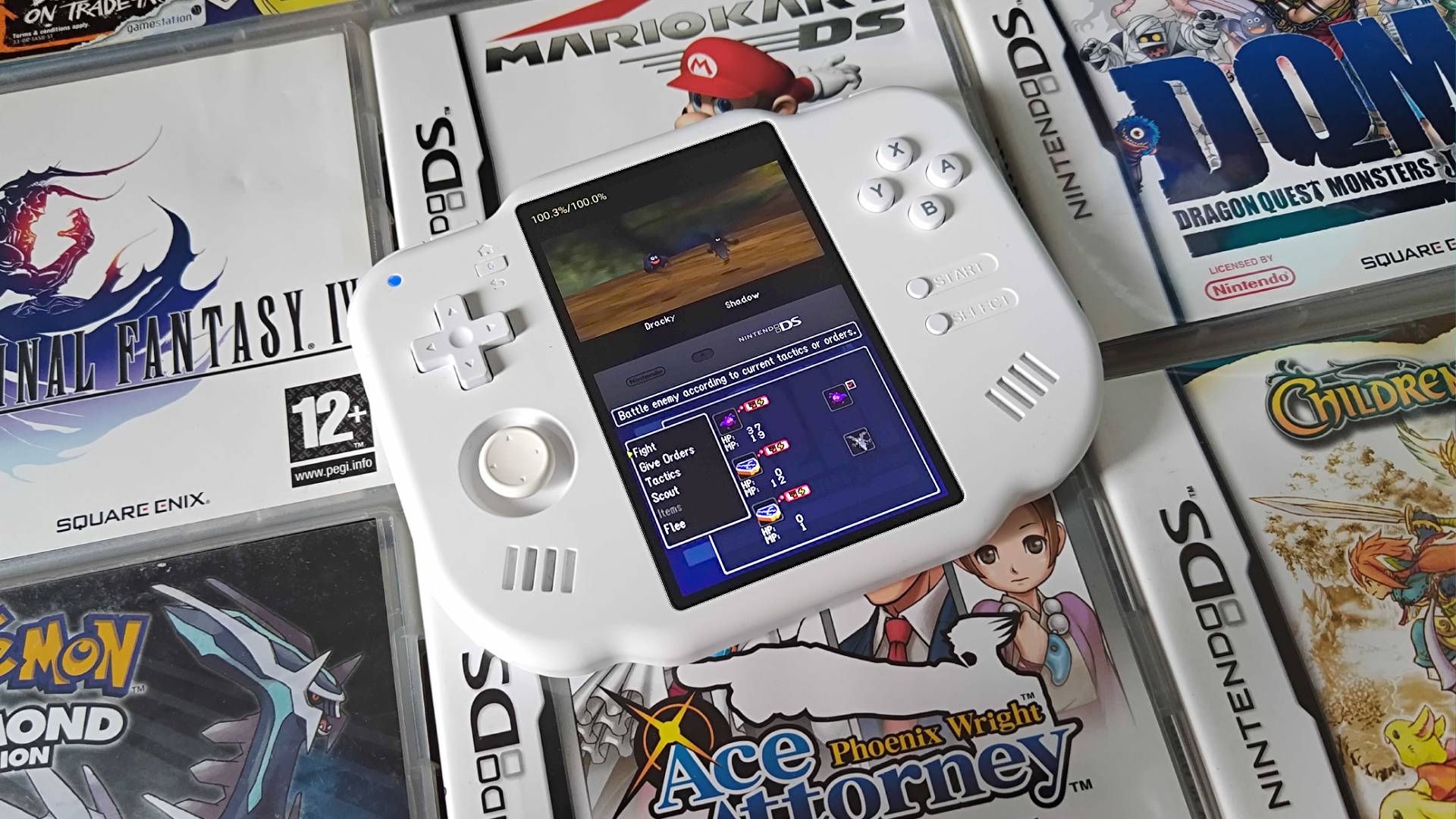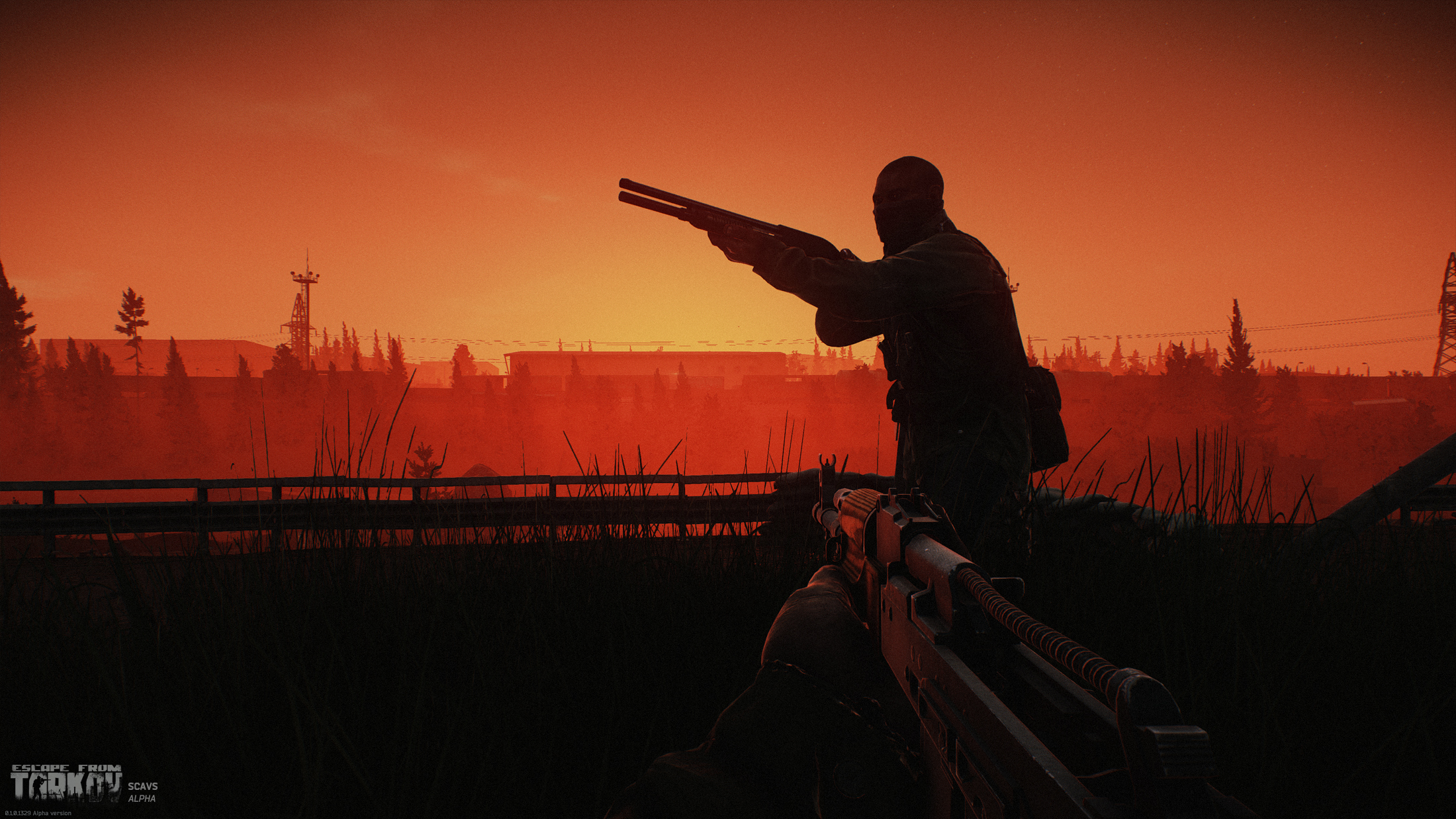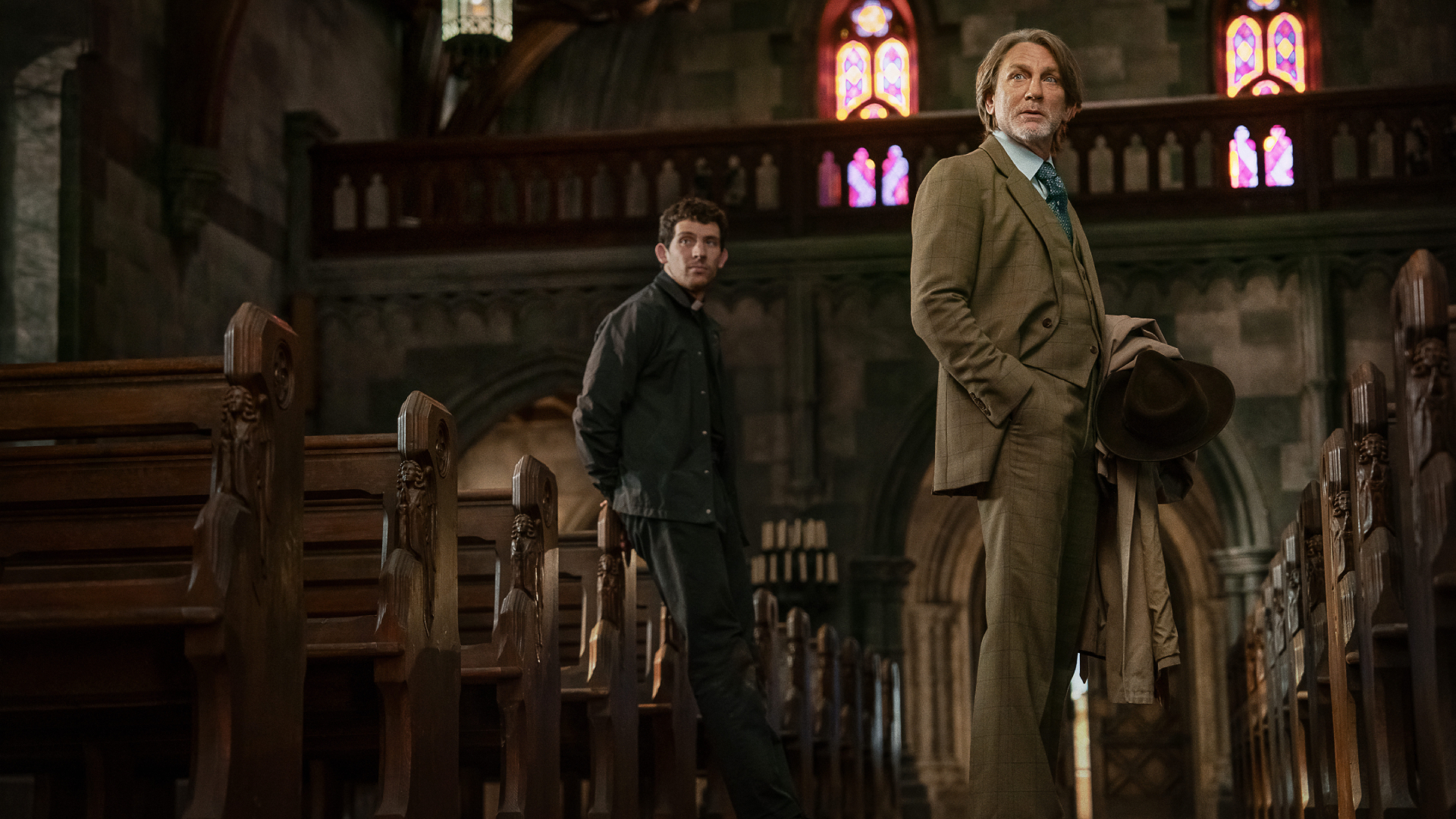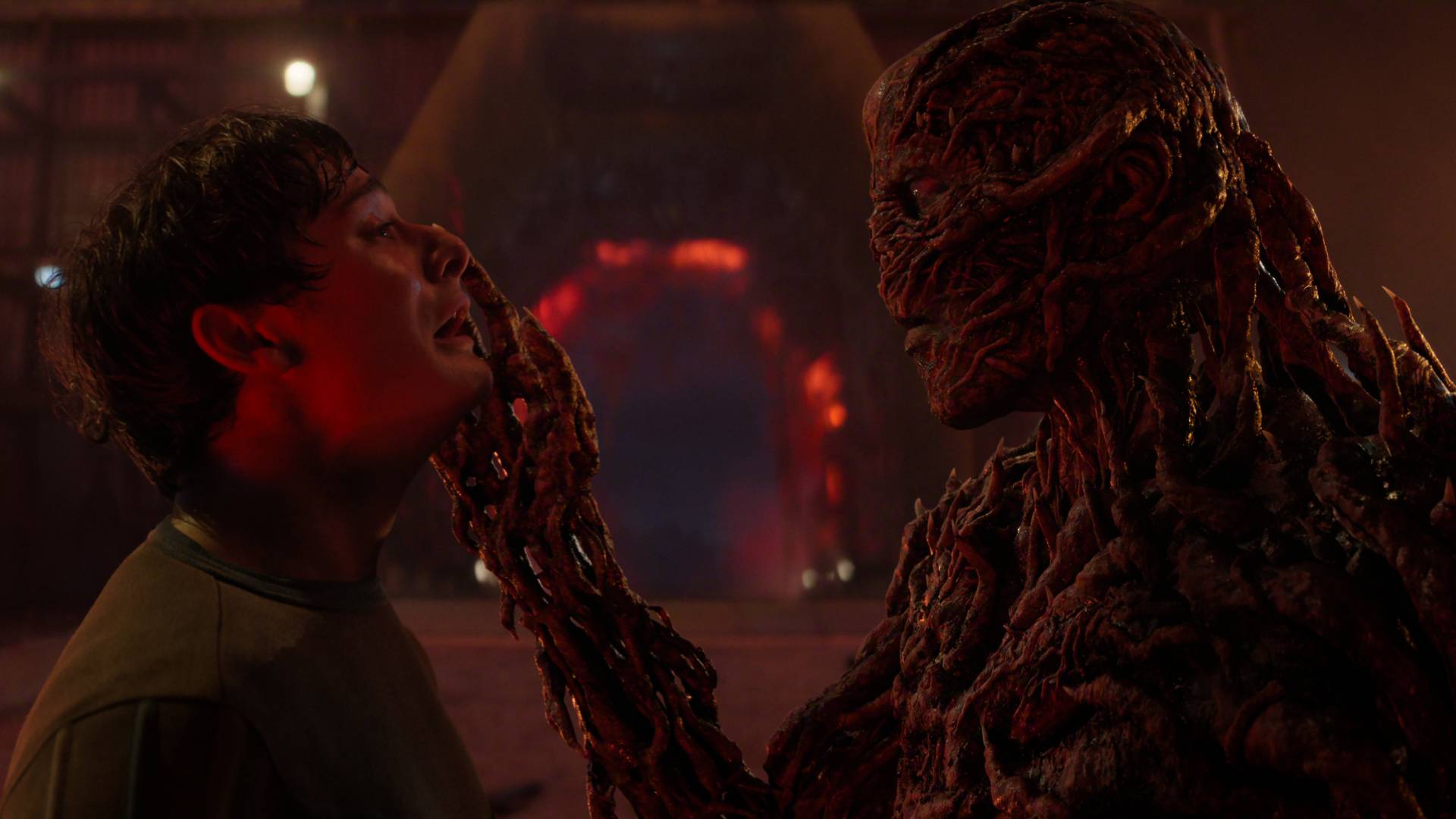GamesRadar+ Verdict
The MagicX Zero 40 is a solid handheld for Nintendo DS emulation, and its vertical screen means it's great for arcade shooters too. It's also more comfortable to hold than you'd think and boasts nicer visuals than the original, but it doesn't quite manage to send the OG console into retirement.
Pros
- +
Vertical screen for DS games and arcade shooters
- +
Surprisingly comfortable to hold
- +
Hall effect joystick
- +
Decent D-pad
- +
Emulation perks like save states and fast-forward
Cons
- -
Vertical screen means it isn't great for every console
- -
Buttons are occasionally crunchy
- -
Second hand DS consoles are available for less
Why you can trust GamesRadar+
I mean this in the nicest possible way, but the MagicX Zero 40 is a weirdo, and I feel somewhat responsible for the handheld’s existence. You see, I’m one of those sickos that has been complaining about Nintendo DS emulation hardware hurdles for years now, and this device is effectively an answer to my dual-screen gaming prayers.
Available for $88 / £69 at Geekbuying, the MagicX Zero 40 feels wildly niche thanks to its portrait IPS touchscreen. It’s a quirk that helps it serve as the best gaming handheld for Nintendo DS games specifically, and it’s killer for “TATE” arcade games that use a vertical display. But, its quikiness is an Achilles heel, one that’s going to upset anyone looking to emulate retro consoles with a sensible aspect ratio.
Nevertheless, the Zero 40 is a solid attempt at a handheld emulator that caters directly to Nintendo DS games. I’m sure some of you will be outraged at the fact that it isn’t early 2000s clamshell chiq, and it does honestly look more like a 2DS than Ninty’s dualscreen console. Just keep in mind that for under $100, you’re getting a device that is affordable, compact, and uses Android to nail touchscreen compatibility.
Design
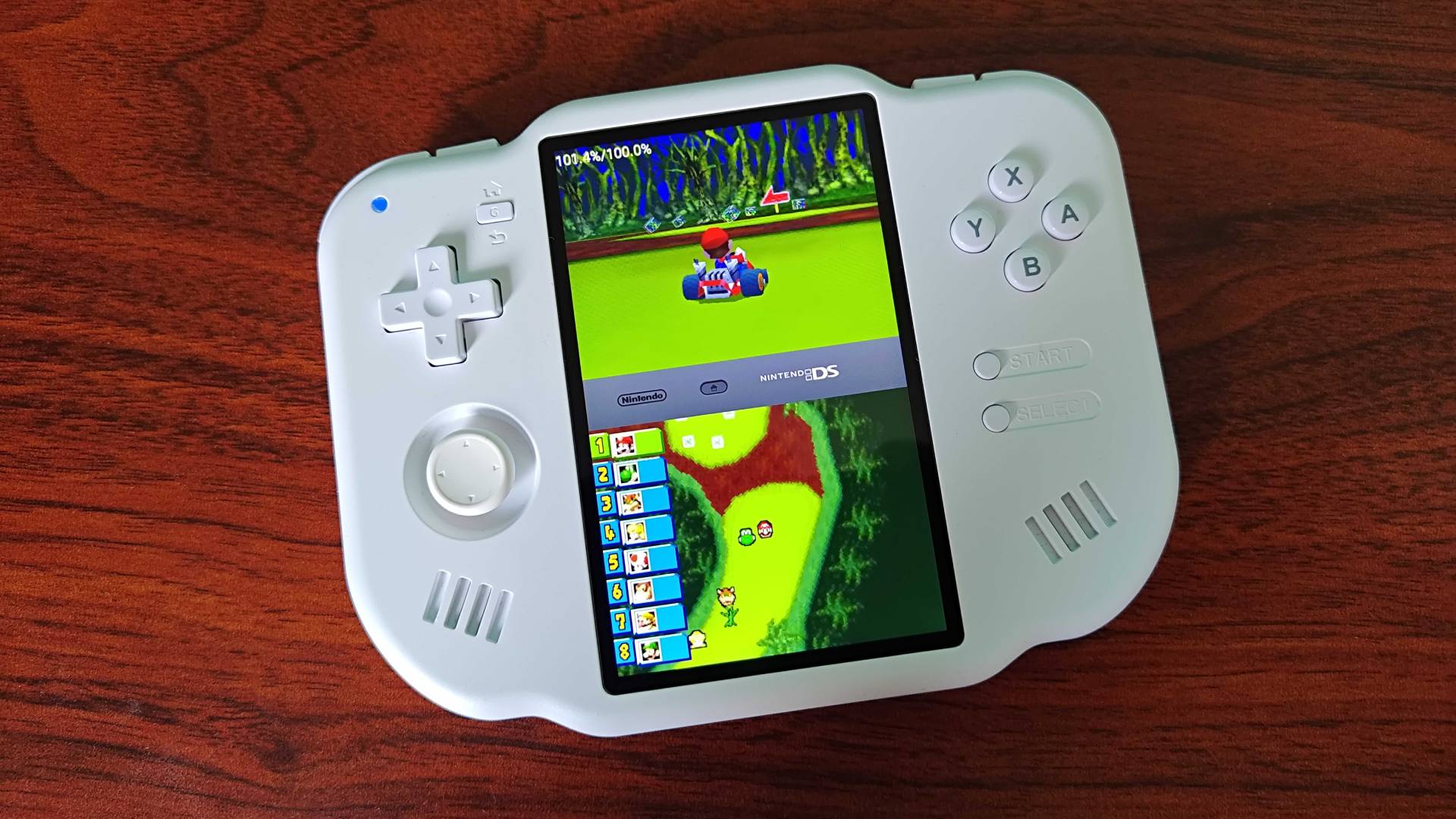
I wasn’t kidding when I said the MagicX Zero 40 looks like a Nintendo 2DS. It’s not identical to Ninty’s doorstopper handheld, especially since it tries to retain some curved edges, but it shares more in common with the non-3D console than you’d think. For starters, both dodge including any ergonomic grips at the back, meaning you’ll have to hold them like you would an uncut sandwich.
Another lesser-known common trait is the fact that both handhelds use a single screen. That’s right, the 2DS’ dual-screens are actually a clever deception, as it uses one portrait display with a middle bezel and shielding blocking off unused space. This naturally helps keep costs down, and while MagicX is using the tactic in a slightly different way, the core implementation remains the same.
Button placement on the Zero 40 also mirrors the 2DS, albeit with some variances. For starters, the d-pad lives where Nintendo’s circle pad usually resides, while MagicX’s embedded thumbstick is underneath. You’ll also find a home button on the screen’s top left. Instead of directly under the bottom touchscreen. Everything else is pretty uncanny, though, as even the shoulder buttons curve around the top.

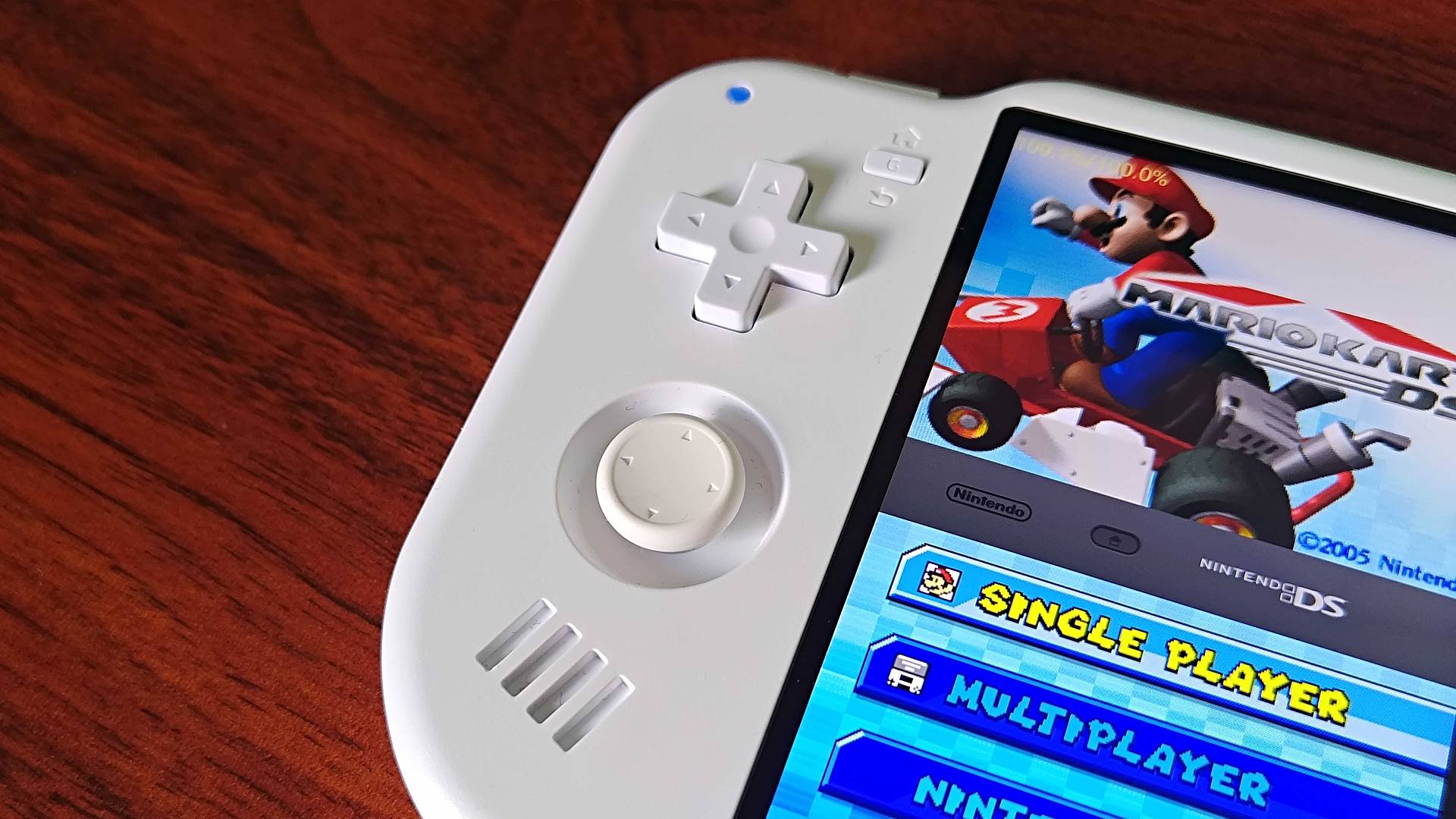
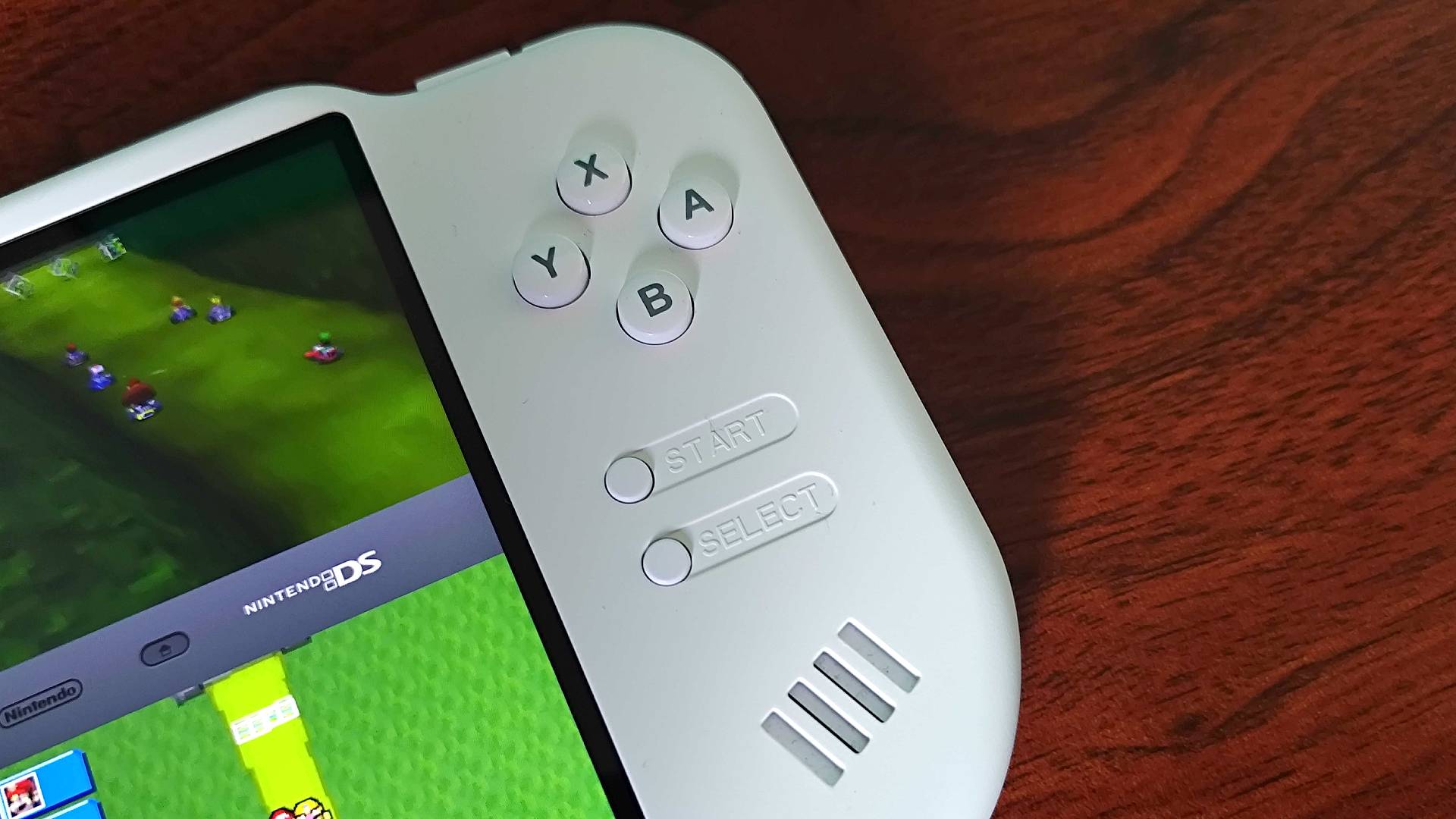
By looking like someone turned a Golbat into a 2DS, MagicX does claw back some ergonomic qualities. The curved bottom edges mean you won’t have corners digging into your palms, something my Nintendo DS Lite is guilty of. Indenting the top shell also gives your index fingers somewhere nicer to perch, but the rest of your digits will still be flailing around a perfectly flat back surface.
Weekly digests, tales from the communities you love, and more
You’d think the Zero 40 would be an ergonomic nightmare, but after spending quite a few hours diving into my favorite outings, I’m not in any great discomfort. The handheld is nice and light at 182g, and the matte-textured shell feels “soft” to the touch. However, that also makes it feel a little cheaper than my Nintendo DS Lite or even the 2DS, which is hardly surprising given this is a sub-$100 emulation device. I do feel like the shell might scuff up pretty easily, though, so treat the lil console with care.
The rest of the Zero 40 is fairly unremarkable. You’ve got two USB-C ports chilling on the top, a fairly flat volume rocker at the left, and a power button on the right next to two microSD/TF card slots. The speakers are firing outwards at the front, just central enough to avoid my puffy palms that’d otherwise muffle their sound. All in all, everything is a fairly standard affair for a handheld that looks pretty odd.
Features
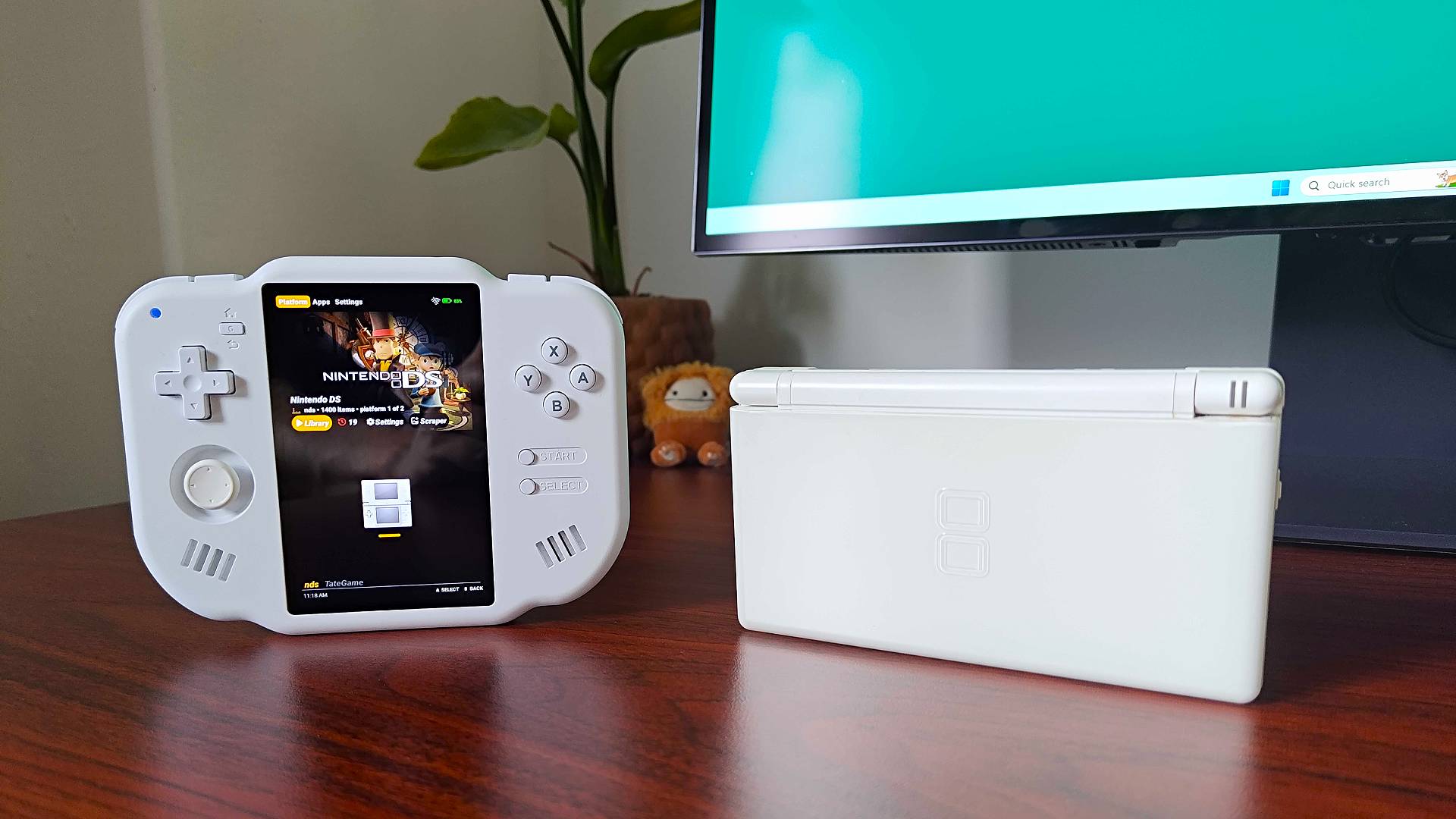
The Zero 40’s standout feature is, surprise surprise, its 4-inch portrait 800×480 IPS touchscreen. For those of you who prefer larger screens, I’m going to hold your hand when I say you’re not really getting 4 inches of playspace with this handheld, especially when playing DS games, Instead, the display is divided into with a faux bezel in the middle to maintain the right aspect ratio. In other words, you’re getting two windows that are less than two inches.
Display: 4-inch IPS touchscreen
Resolution: 480 x 800
Refresh rate: 60Hz
CPU: Allwinner Cortex A53 A133P 1.8Ghz
GPU: IMG PowerVR GE8300
RAM: 2GB LPDDR4
OS: Android 10 (Dawn launcher)
Connectivity: USB-C, Wi-fi, Bluetooth, 3.5mm headphone
Storage: Up to 512GB (TF / MicroSD)
Remember, that’s a feature rather than a flaw, as the goal here is to emulate a dual-screen handheld via hardware. The difference here is that, unlike premium handheld gaming PCs like the Ayaneo Flip DS, MagicX is making do with a singular display, but that does mean you’ll have the full run when playing TATE vertical arcade games.
Helping deliver the handheld’s DS goodness, you’ve got Android 10 with MagicX’s “Dawn Launcher” sitting on top. It’s perfectly serviceable, and while the Zero 40 is using an OS that came out way back in 2019, the overlay helps make jumping into emulators and apps fairly snappy. You’ll still have familiar buttons within the swipe-down menu, including a brightness slider, Wi-Fi, Bluetooth, and everything else that’s standard with Android, so you won’t have to wrestle with a completely custom layout.
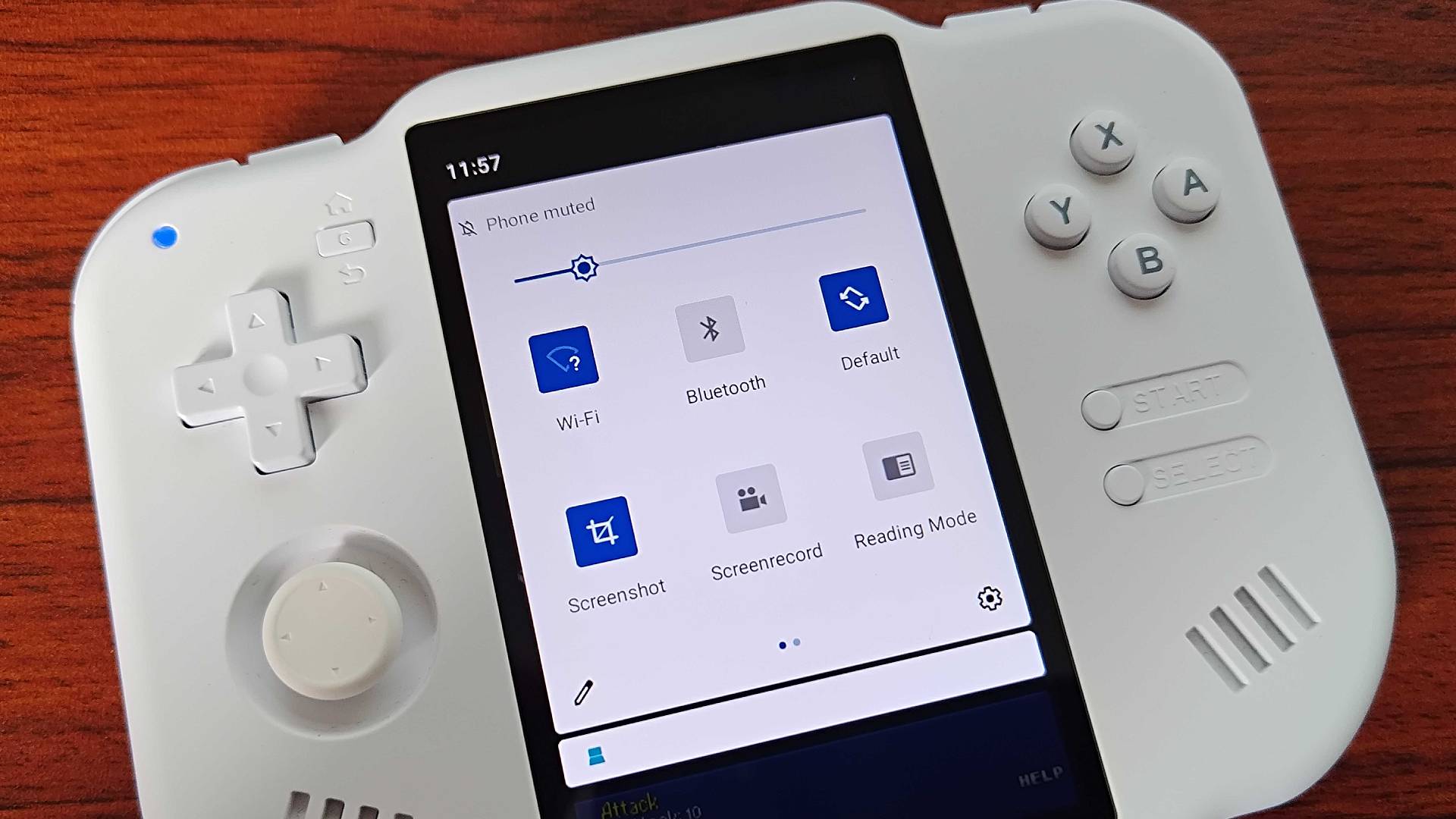
You’ll also find some apps waiting in the wings for you, including Drastic for DS games and RetroArch for just about everything else. That means you’ll be able to use your own library to dive into some classics without additional setup, and the handheld even includes Duckstation, Flycast, and Mupen64Plus, just in case you want to get adventurous. Just keep in mind that we’re talking about emulation here, so you’re not getting a physical cartridge slot or anything fancy like that.
Trading physical game support does mean you’ll be able to tap into features like save states and fast-forwarding gameplay. Both these tricks come courtesy of Drastic, and they are invaluable when games have unskippable cutscenes or antiquated save spots that only pop up sporadically.
There are also a couple of physical Zero 40 features that might be taken for granted, like the fact that it uses USB-C for charging, has an additional OTG port for accessories, and supports up to 512GB storage. You’re even getting a hall-effect thumbstick that shouldn’t ever succumb to drift, should you decide not to stick with the D-pad.
Performance
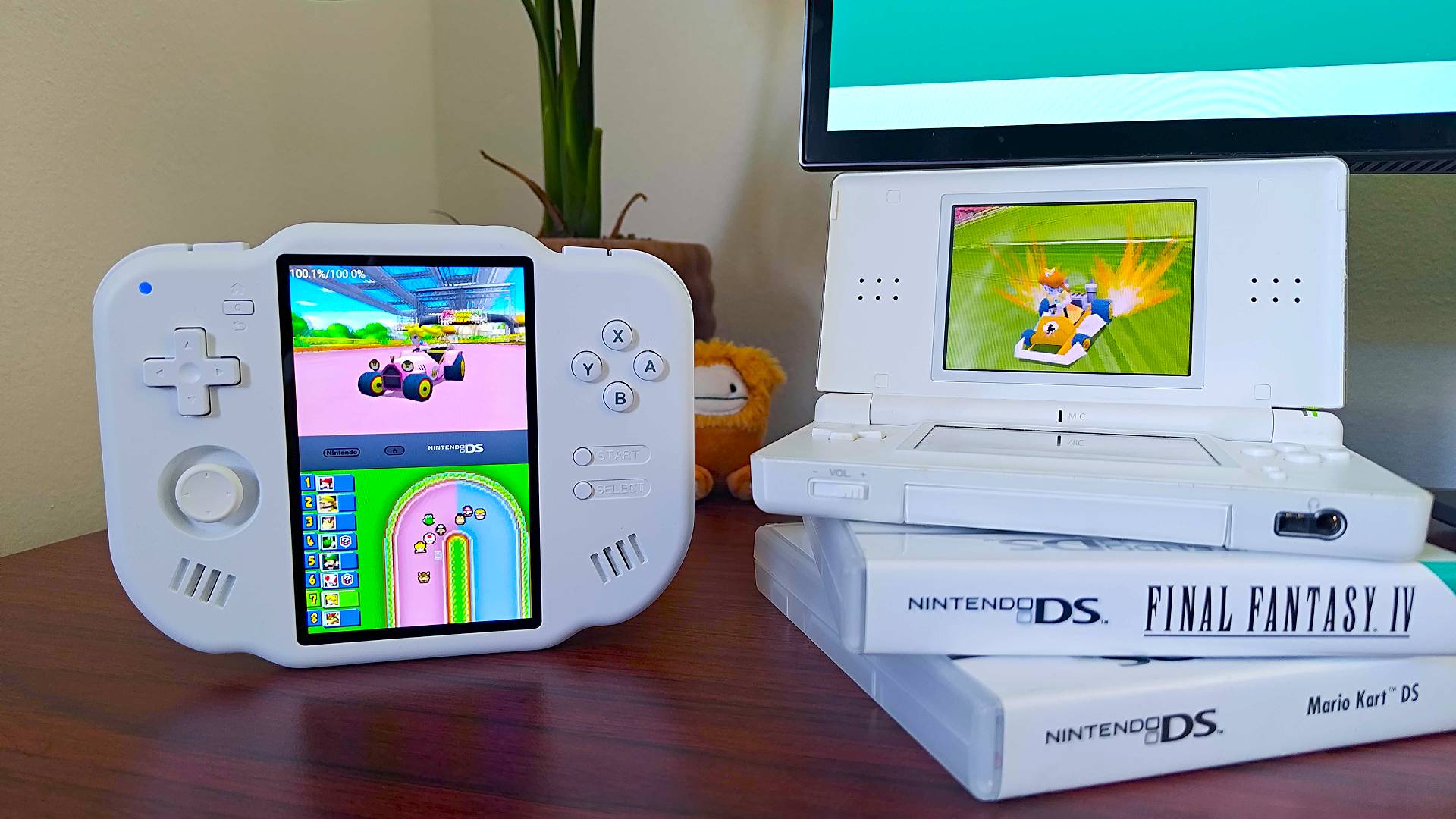
I don’t envy the tasks bestowed upon the MagicX Zero 40. Not only does it have to nail Nintendo DS software emulation to justify its whole existence, but it has to offer up a physical experience that won’t leave you wishing you had the original handheld. After a solid chunk of testing the portable side by side with an actual DS Lite, I’m going to go ahead and say the Zero 40 can breathe a sigh of relief.
Admittedly, NDS games aren’t particularly punishing to run, and the Zero 40’s 2GB RAM and 1.8GHz quad-core are more than up to the task. It naturally helps that Drastic is a solid emulator too, so the result is adventures running at full speed with options like high-resolution 3D rendering.
I hadn’t quite realised how rough textures and character models look on the DS Lite prior to this review, and the Zero 40 really works its magic with games like Mario Kart DS. The smaller top screen space will naturally lower resolutions look sharper, but there’s absolutely more at play here, as the Italian plumber, his vehicle, and the game tracks all look distinctly less pixellated. That’s ultimately the result of emulation perks giving the graphics a bit of a glow up, and exactly the kind of results I want to see in 2025.
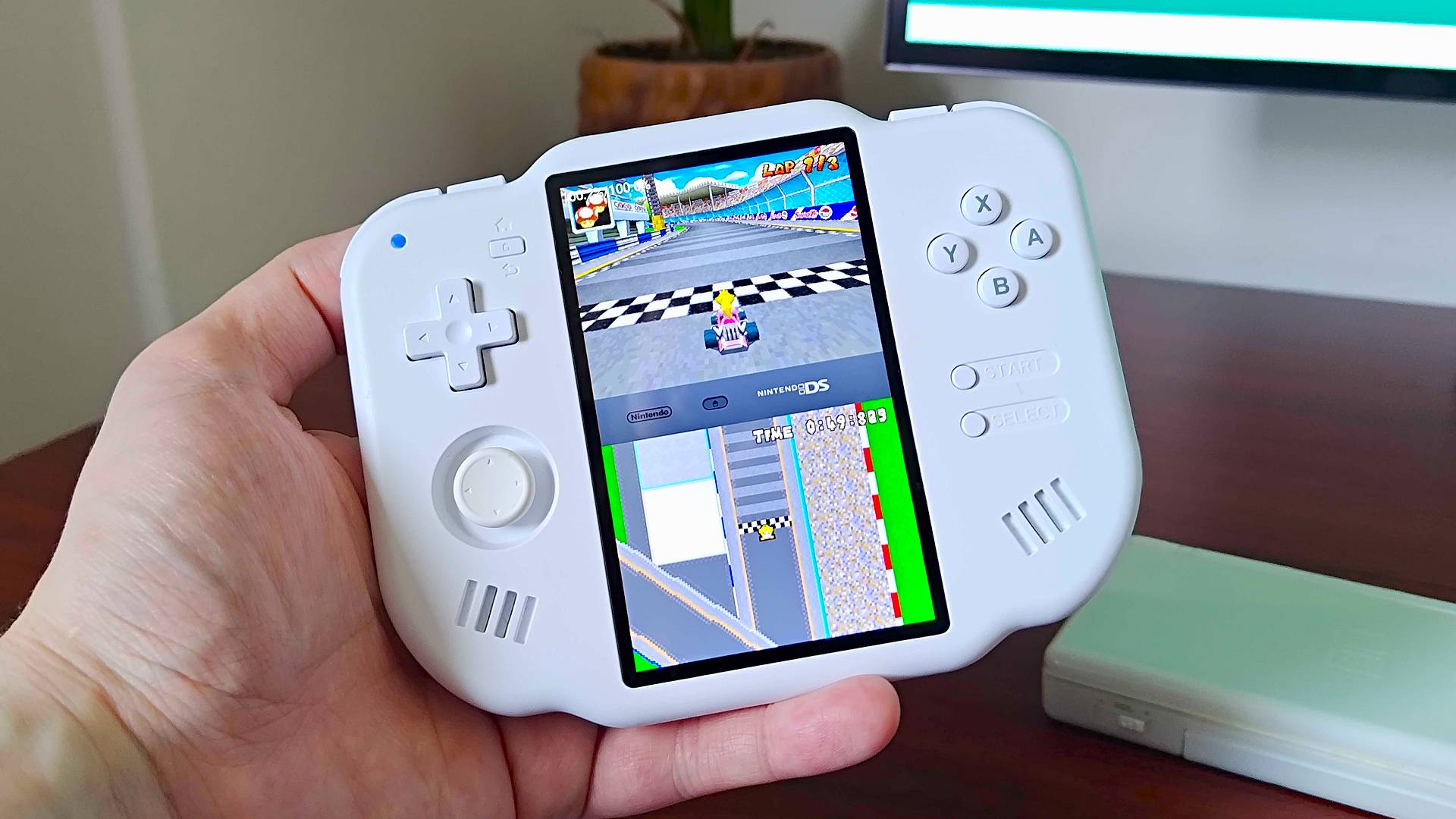
One of the first critter-catching capers I picked up for the DS Lite, Dragon Quest Monsters: Joker, also looks fantastic on the MagicX 40. Akira Toriyama’s art is given a chance to truly shine brighter than on the original 256 x 192 pixel display, thanks to smoother edges, nice anti-aliasing effects, and far sharper fine details. Needless to say, it’s pretty pleasing being able to make out the main hero's face at a normal distance compared to the pixellated features on the OG display.
The screen itself does a fairly nice job with colors and contrast, producing a level of vibrancy that’s only slightly less saturated than the original screen. It’s also commendably bright, too, meaning you’ll have a far easier time out in the sunshine than you would with the OG DS. What I am still a little disillusioned with, however, is the amount of actual screen space you’re getting for the top and bottom displays, as they’re almost too cramped for their own good.
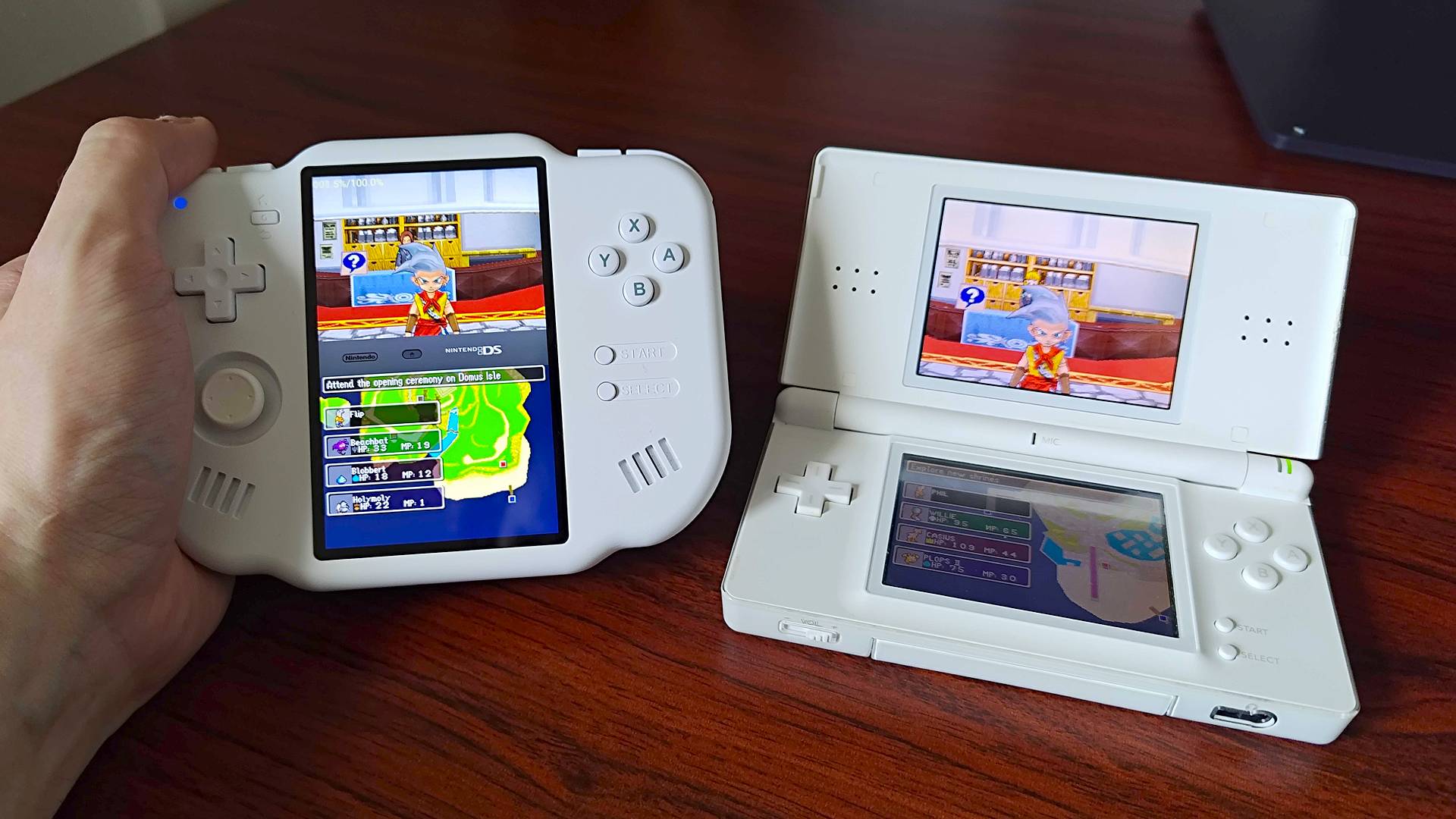
This is something I picked up on while revisiting The Legend of Zelda: Phantom Hourglass, a Wind Waker sequel that exclusively uses the touchscreen for controls. While I was able to successfully swing my sword around and tell Link where to trot using fairy guidance, I often found my finger wanting to swipe beyond the vertical screen. I practically had to hold my digits to the very edge to get the green-clad hero to run, which feels quite awkward on a smaller panel.
I wouldn’t say games like this are remotely unplayable on the Zero 40, but you can tell that the developers created the adventure with a larger display in mind. It doesn’t help that the handheld doesn’t come with a stylus, but you can pick up capacitive options at Amazon if you prefer pinpoint precision. I’m not convinced it’s going to make for a more comfortable experience, as I found the setup unwieldy even on original hardware.
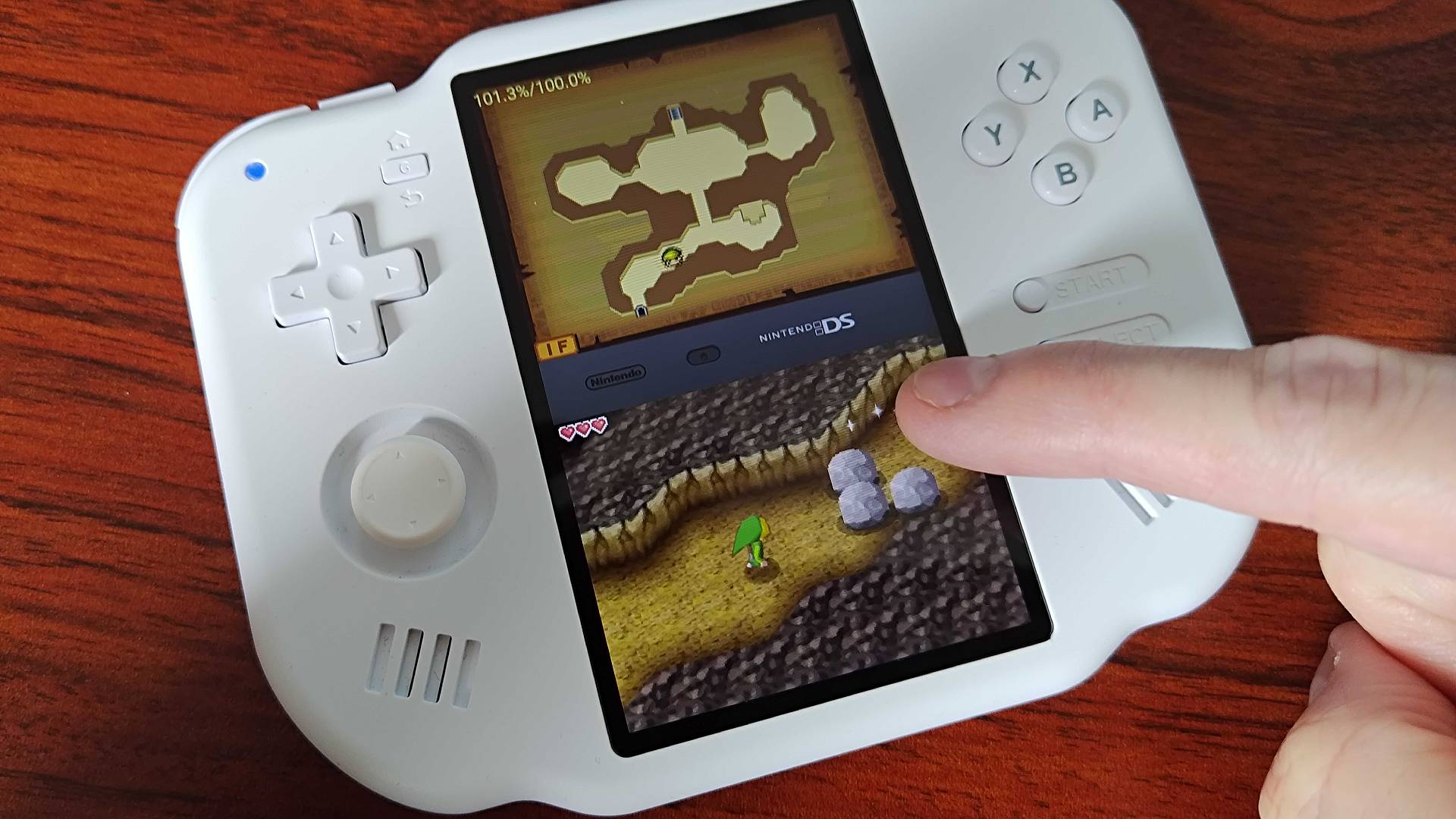
The main takeaway regarding the touchscreen is that it’s functional across all DS games, but not ideal due to its size. This is the exact same caveat that’s tied to using the Anbernic RG Cube and its square screen, as the double-stacked viewing windows are only fractionally smaller. I do still think that this vertical screen approach is robust in most scenarios, but you will be aware of how small the play space is with some games.
While your mileage will vary with touchscreen games, using the Zero 40’s conventional controls feels right. The D-pad isn’t perfect, and it can feel a little rigid when pulling off faster movements (à la Mario Kart drifting), but it’s not distractingly bad. I sadly can’t say the same for the face buttons, as while they’re technically serviceable, they’re pretty rattly and can occasionally produce an upsetting crunch sensation when pressed at the wrong angle.
One element I like far more than I anticipated is the left thumbstick, as it offers some rest bite from the old-school D-pad. It felt particularly nice when slogging across the map in Final Fantasy 4, trying to avoid random encounters, and my Nintendo 64 instincts firmly kicked in when trying to backflip in Super Mario 64 DS. I’m traditionally not a fan of recessed sticks, but in this instance, the concave rubber grip and slightly longer stalk give it a helping hand. That said, I’m still not into the feeling of my thumb grazing the handheld’s shell, and the stick does make contact with the round gate.
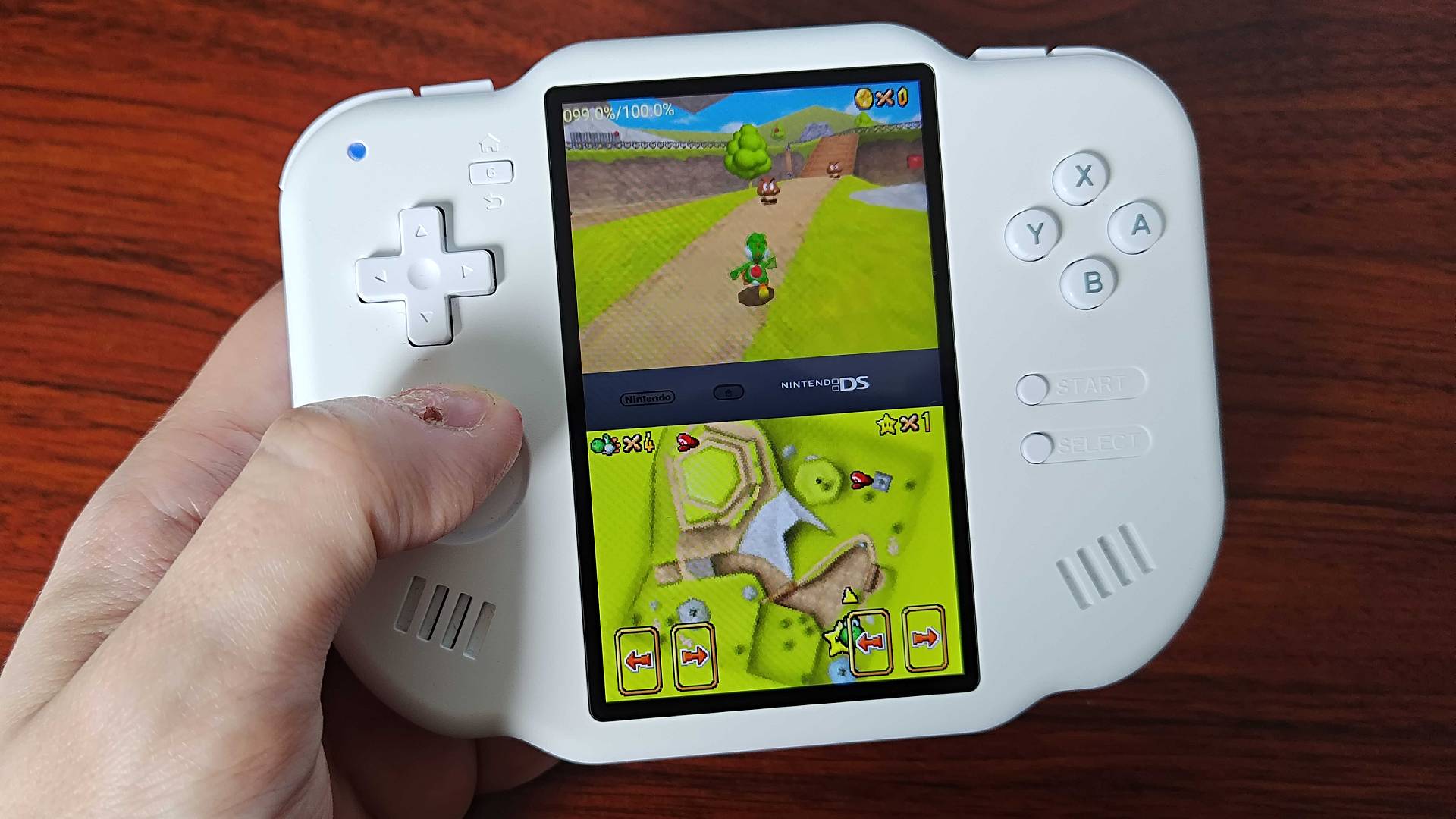
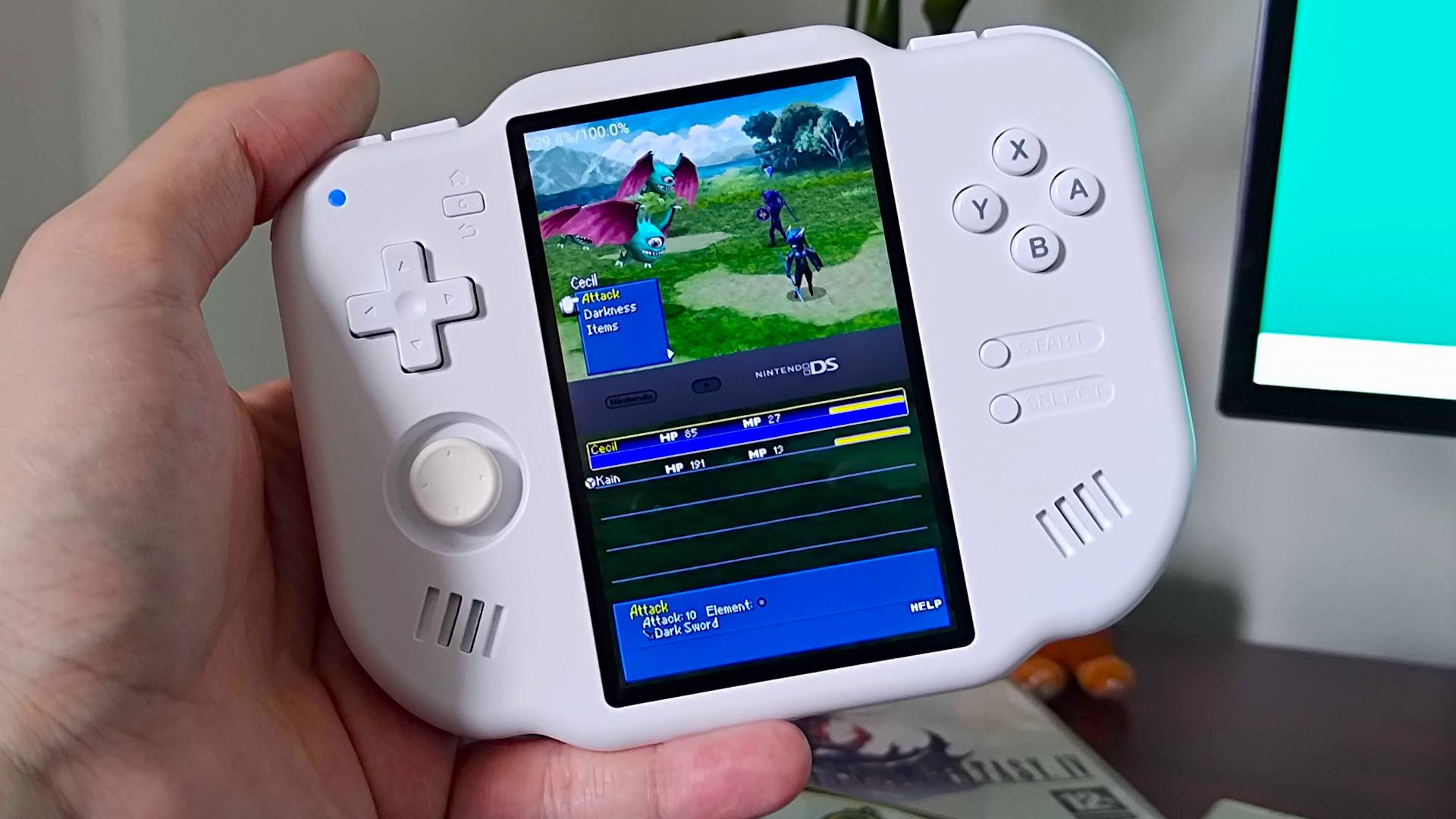
Most of you will obviously be picking up the MagicX Zero 40 for DS games, but its vertical screen makes it naturally ideal for TATE arcade shooters. Not every shoot 'em up will use an aspect ratio that takes advantage of the real estate, but I still had a blast playing some of my favorites like Truxton and Dodonpatchi. Not having lots of unused space at each side does help the experience feel a little less cobbled together, even if you’re technically getting the same playable space as many other similarly sized handhelds.
I do have to point out, though, that playing TATE shooters with the Zero 40’s joystick feels pretty damn nice. Perhaps it’s because it feels closer to an old stick than the D-pad, but it’s still worth noting if you’re big into arcade romps. I was also pleasantly surprised by the handheld’s rumble when playing Dodonpachi, as it added something I don’t usually get to experience when playing the Sega Saturn version.
As for battery life, you'll be able to squeeze around 5-7 hours out of the Zero 40 thanks to its 4300mAh cell. I was personally able to get in around 5-6 hours of continuous playtime out of the handheld, which isn't half bad considering I had the brightness up beyond more than halfway. At the same time, though, I'm not that impressed since my original DS Lite can still hold a charge for literally months, so that's worth bearing in mind if stamina is a priority.
Should you pick up the MagicX Zero 40?

As a dedicated DS handheld, the MagicX Zero 40 has a lot to offer, especially if you’re looking to embrace modern emulation tricks. It’s also a nice option for TATE shooters thanks to its weird vertical screen, but the aspect ratio does mean it’s something of a two-trick pony.
Ultimately, I’d ask yourself whether you’d prefer to just pick up a second-hand Nintendo DS before considering the MagicX Zero 40. The latter is going to produce nice visuals thanks to the power of emulation, and you’re getting a joystick if you’re not really into D-pads. However, if you’ve still got the OG handheld lying around, or can find one for well under $80, it’s probably still the better option for exploring your old DS library.
But hey, if you’re looking for a brand-new device, the Zero 40 gets plenty right, and I respect the fact that it boldly borrows looks from the Nintendo 2DS.
How I tested the MagicX Zero 40
For a month, I tested the MagicX Zero 40 using a collection of my own original Nintendo DS games and classic vertical arcade shooters. During that time, I directly compared the handheld’s emulation performance, physical features, design, and software abilities to the original handheld to examine whether it offers extra functionality. I also conducted side-by-side comparisons with several games to check for any compatibility issues or quirks tied to the console’s Drastic and Retroarch emulators.
For more information on how we test handhelds and other gadgets, swing by our full GamesRadar+ hardware policy for a full rundown.
Already using Valve's handheld for emulation? Swing by the best Steam Deck accessories and best Steam Deck docks to complete your hybrid setup.

Phil is the Hardware Editor at GamesRadar and joined the team in 2023. In the past, they've also contributed to the likes of TechRadar, The Daily Star, the BBC, and PCGamesN, but these days, they specialize in testing the latest gaming handhelds, monitors, TVs, and PC components. They're also extremely nerdy about retro consoles and playing the classics on both new and old systems.
You must confirm your public display name before commenting
Please logout and then login again, you will then be prompted to enter your display name.
